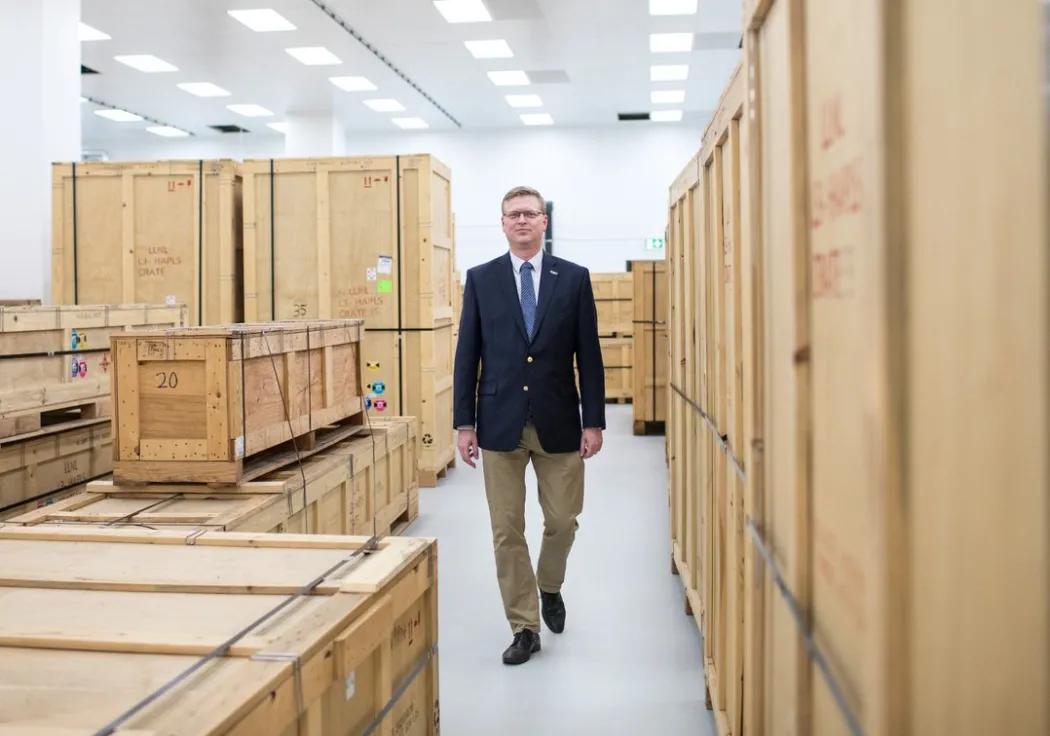A unique laser system which after just under four years was developed for ELI Beamlines by the American national laboratory Lawrence Livermore National Laboratory (LLNL), has been transported to the ELI Centre in Dolní Břežany. The delivery of this unique technological device, which is the most expensive out of the four laser systems ELI Beamlines, means that one of the key milestones in the laser centre commissioning has been reached.
On Thursday 8th June 2017 a ceremonial meeting took place in ELI Beamlines attended by vice prime minister Pavel Bělobrádek, representatives of the Ministry of Education, Youth and Sport, Czech Academy of Sciences and the Institute of Physics which concluded an important phase of the international centre ELI Beamlines. A unique pumping laser, by means of which for example accelerators for compact particle accelerators for medical applications will be developed or internal structure of live cells will be studied, has finally arrived to the Czech Republic.
“Top-class and unique device which has arrived to the ELI Beamlines centre was developed in the USA and it demonstrates the importance of the collaboration of both the countries in the area of science. The USA are our inspiration in the area of support and development of applied research, start-ups, in the level of transferring the results of development and innovations to commercial sphere. It is the reason why the second scientific diplomat who will interconnect Czech and American research institutions, universities and industrial companies is heading behind the Atlantic ocean,” said the vice prime minister for science, research and innovations Pavel Bělobrádek.
This lasers represents a new generation of diode-pumped high-energy laser systems. As the only one in the world it was built exclusively on high-power semiconductor laser diodes and thanks to new technologies using diode light of 10 pulses per second it exceeds system installed in other parts of the world by several times. For the laser community it means a decisive breakthrough: it is the first petawatt laser which provides actually usable highly-repetition pulses for application research.
The laser system will have a wide spectrum of use and it will be used in a number of areas of basic and applied research. Its most significant applications include compact laser-excited particle acceleration for new medical methods or generations of short-pulse X-ray radiation for microscopy with high spatial and time resolution for material and medical research. “Due to this laser system it will be possible to capture images with million times larger resolution than the ones which we know from hospitals today, or we will be able to capture and directly follow the procedure of chemical reactions in cells,” explains the specific applications Michael Prouza, director of the Institute of Physics of the Czech Academy of Sciences.
The Institute of Physics collaborated in the development of this laser with the American national laboratory LLNL more than three years. Twenty specialists in the area of optics, optomechanics, electronics and control systems from the American laboratory and sixteen researchers, technicians and designers from ELI Beamlines participated in every day work. “It was a great period which we all like to think about. This integration and collaboration from the very beginning of the laser system development is a significant added value not only for its future operation and commissioning, but it also provided our scientists with a unique professional experience which would not be able to get elsewhere,” says Bedřich Rus, the leader of the programme of laser technologies at ELI Beamlines.
In the following twelve months the Czech-American team will assemble and integrate the laser with the central control system and the laser pulse distribution system which will enable the use of the laser in experiments. Its power will be gradually increased to the full project value during which the system will provide top power exceeding 1 PW (millions of billions of watts) at a repetition rate of 10 Hz. It will thus exceed its current record and will become a petawatt laser system with the highest average power in the world. Moreover it will boast of other “bests”; apart from the use of the brightest laser diodes in the world the big compressor of PW pulses of the new laser system will become the biggest opto-mechanical vacuum structure which has ever been made in the Czech Republic.
The laser system will become available to the international scientific user community in 2018.
